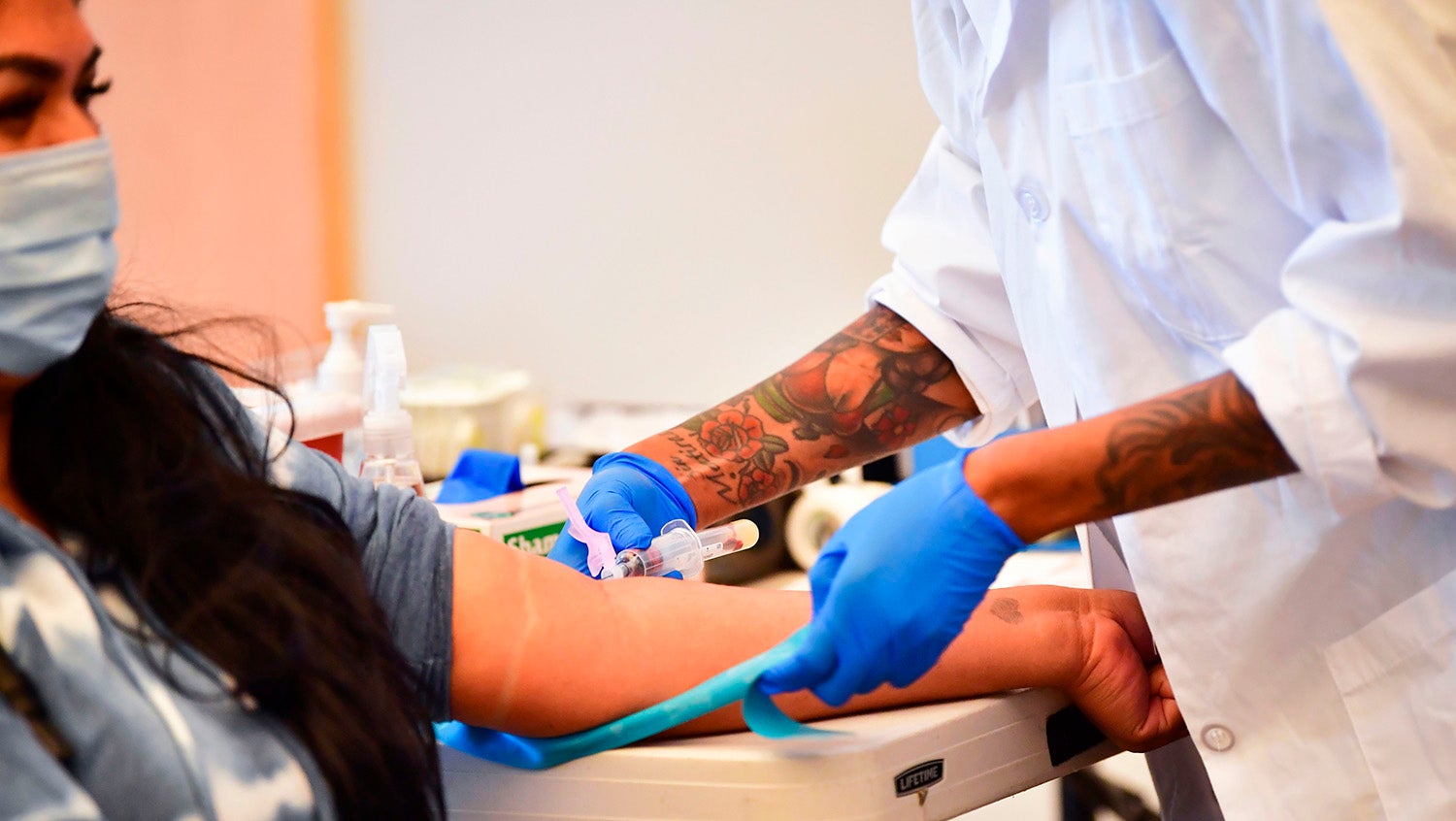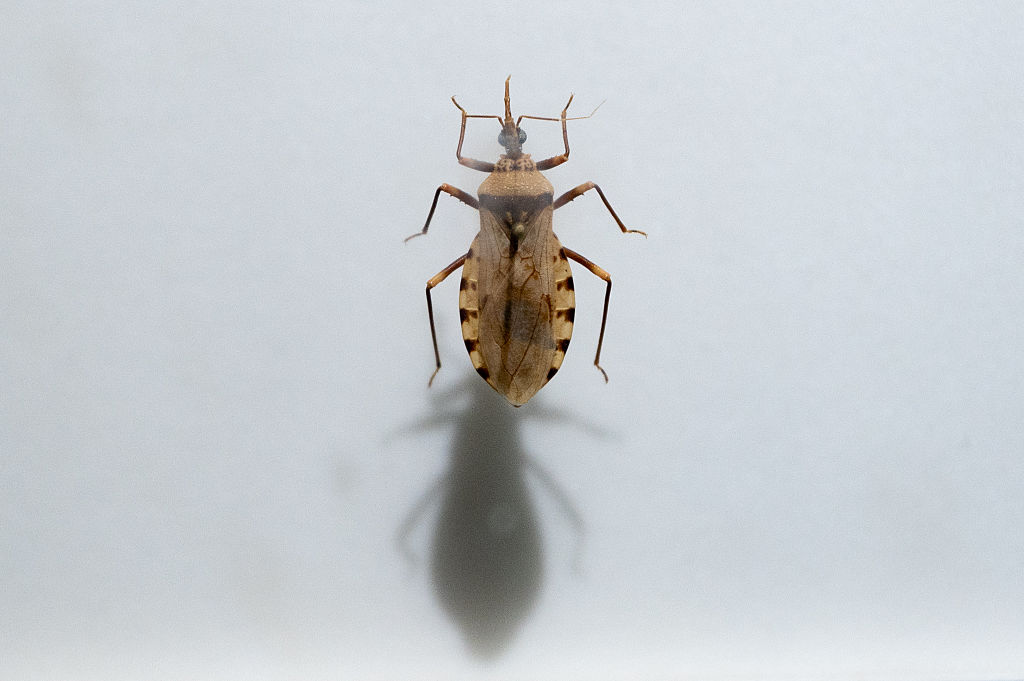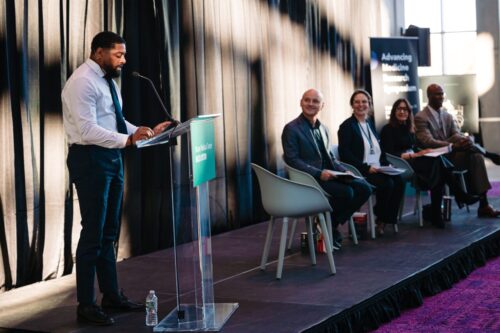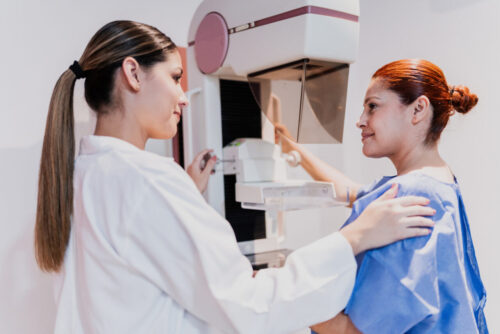Bettering Chagas Disease Screening Is an Immigrant Health Equity Issue
September 10, 2025
By Meryl Bailey

Getty Images
Leaders of a new public health initiative discuss the challenges of raising awareness of Chagas disease, a neglected tropical disease that the CDC just said is now endemic to the U.S.
Climate change and international migration are accelerating. With these critical global challenges, identifying and treating emerging health concerns are adding complexity and urgency to the work of medical practitioners in recipient countries. Chagas disease, a little-known parasitic infection that can cause life-threatening cardiac conditions, is perhaps the most stunning example of migration and climate change merging into a perfect storm.
It’s a disease thought to impact more than 8 million people in Central and South America. But immigrants moving into the U.S. are often unaware of Chagas disease, and most U.S. doctors lack the knowledge to screen for the infection, even when concerning symptoms arise. New concerns for transmission are also emerging as the triatomine bug, the vector that spreads Chagas disease moves into the warming southern U.S. In September 2025, the Centers for Disease Control and Prevention (CDC) released a report saying that there is sufficient evidence that Chagas disease is endemic to the U.S., joining 21 other countries in the Americas..
The CDC estimates that 300,000 people in the United States have Chagas disease, which has recently also been called the “kissing bug disease.” But infectious disease experts believe this number, based only on one study of blood bank data, is likely a gross underestimate of the country’s disease burden. In fact, experts suggest less than 1% of people living with Chagas disease are identified and treated. The disease, which can cause strokes or heart attacks, is thought to cause 10,000 deaths each year globally.
As the number of migrants at the U.S.-Mexico border reaches a record high, a new initiative based at Boston University School of Medicine, BU School of Public Health, Sargent College, and Boston Medical Center aims to expand healthcare providers’ awareness of Chagas disease and improve routine screening within the U.S.
HealthCity recently sat down with Maja Carrion, MPH and Alejandra Salazar, RPh, PharmD, from the Implementing Novel Strategies for Education and Chagas Testing (INSECT) team, to learn more about Chagas disease, its impact on immigrant health, and the initiative’s work to elevate the understanding of this neglected disease among U.S. healthcare providers.
HealthCity: What is Chagas disease?
Alejandra Salazar, RPh, PharmD: Chagas disease is a parasitic infection transmitted to humans by the triatomine insect, or as it is called colloquially the “kissing bug.” These bugs are found in houses made of natural materials, like adobe, mud, or straw. The insects bite humans usually at night, primarily children, because children are generally less aware of the insects on their faces and bodies. When they bite, the feces of the insect contain the parasite Trypanosoma cruzi. This parasite can be an errant tourist, entering the body through the mucus membranes or wounds in the skin, and these parasites can cause acute Chagas.

A photo of a panstrongylus megistus, a blood-drinking insect in the subfamily Triatominae, an important vector of Trypanosoma cruzi, the cause agent of Chagas disease. (Source: Getty Images)
From there, it can be transmitted vertically through blood transfusions and congenitally from mother to baby.
Chagas disease is designated as a neglected tropical disease. It is important to know neglected diseases are not rare. Chagas is actually quite prevalent outside the United States, with upward of 10 million people infected worldwide. It is common in Latin America in areas where people live in substandard housing, from Mexico to Argentina.
HC: What are the symptoms of Chagas disease?
AS: Acute Chagas can be hard to diagnose because many patients are asymptomatic and those that do get sick tend to have flu-like symptoms. Some people develop a specific type of swelling in the eyes, which is probably the only symptom unique to acute Chagas. So, most people don’t know they have the infection. The acute phase may last two to three months, but it becomes chronic Chagas if it doesn’t get treated.
People with chronic Chagas may have it for many years, and they don’t even know they have it. Later in life, about 30% of patients can develop some chronic symptoms. These can include life-threatening cardiac symptoms or irregular heartbeats, or they have gastrointestinal diseases. It could be constipation, or trouble swallowing—very unspecific symptoms.
HC: With so many people unaware that they are Chagas carriers and more than 60% of people remaining asymptomatic throughout their lives it must be difficult to truly have an accurate picture of the prevalence of the disease. How does under-diagnosis impact care?
AS: The CDC estimates that about 300,000 patients live with Chagas in the U.S. Because of this, the medication approved by the FDA to treat Chagas is classified as an orphan drug—the designation for a medication for a disease that is not very common. However, the current numbers are not precise because diagnosing patients can be difficult.
The medication most commonly used for Chagas was only approved for pediatric patients through an isolated drug approval pathway. But, it’s not as helpful because we are not treating many children with acute Chagas. The problem is that the adults who migrated from all these areas in Latin America, who have had Chagas for many years, are here. They are part of the fabric of society. That means that we’re treating all these adult patients off-label.
The other problem with this medication to treat Chagas is it’s manufactured by only one pharmaceutical company and available with limited distribution. To prescribe it, I frequently have to submit prior authorizations for insurances to cover. The insurance companies often want to be sure that we provide proof of diagnosis, medical necessity, and other administrative requirements that may delay treatment
HC: How is INSECT working to raise awareness of Chagas disease? Can you discuss the work of the team and the novel strategies that you are implementing?
Maja Carrion, MPH: INSECT has two prongs to it. One of them is to better understand how healthcare providers learn, especially about new topics, so that we can make sure we are creating materials that will engage them and raise the profile of Chagas disease in the U.S. Physician and other healthcare provider awareness is really low—almost nonexistent—in the U.S. This project targets increasing awareness of Chagas for that first point of contact: physicians in primary care, family medicine, adult internal medicine, pediatrics, OBGYN, and also cardiology, because some Chagas patients have undiagnosed, severe cardiac symptoms that are treated without considering screening for Chagas.
We are conducting focus group discussions with these providers and healthcare staff—including PAs and nurses, admin teams, and laboratory personnel—to understand how we raise can awareness in a way that works for them to get them to screen more patients, be more aware, and spread the word because Chagas isn’t that rare. We are also planning to develop materials and increase access to some existing materials for the professional societies on board to help raise the profile of Chagas among more healthcare providers.
Our other mission is to encourage replication of a Chagas screening model for institutions treating at-risk populations.
HC: Can you describe an example of an effective Chagas screening model?
MC: There is a screening program for Chagas that was started by Dr. Julia Köhler and Dr. Jenn Manne-Goehler at East Boston Neighborhood Health Center, which treats a large number of at-risk patients. Since 2018, this Strong Hearts program has been raising awareness among the staff there and has implemented screening for Chagas disease. The model relies on first finding Chagas champions, people in the facility who are eager and enthusiastic about setting up screening for Chagas disease. Then, it’s about educating providers and implementing a system that makes it easy for them to screen their patients, deliver the results, and then refer them to treatment with an infectious disease specialist.
INSECT is taking that model and encouraging providers treating at-risk populations to adopt it. As part of our focus group discussions, we present the Screening Hearts model and ask about barriers and challenges to implementing it. There are big differences between institutions and their capacity to implement it. We are then combining all that we are learning into a handbook that will hopefully address questions, concerns, and common issues that may arise when starting the screening program. Through INSECT, we hope that we will be able to see more programs started like Strong Hearts across the U.S.
HealthCity: How do you see INSECT’s work contributing to immigrant health equity and improving care worldwide for Chagas?
MC: The hope is that at the end of this five-year initiative, we will have more screening programs set up, we will have helped a lot more patients, and we’ll have raised the profile of the disease.
With better screening, we’ll have better data because, in the end, many things, particularly policies and regulations, are data-driven. With more data, we will make our case for why Chagas is a big issue. If you can raise the profile of the disease in a wealthy nation, you’re going to raise the profile of it in other countries as well. Then hopefully, pharmaceutical companies or diagnostic companies will work toward improving diagnostics and treatments. We haven’t had a new drug in almost 60 years, and the drugs we have aren’t sufficient.
This is the long-term, lofty goal. If we can raise the profile here, hopefully that will incentivize industry and policy, and we’ll be able to really help the millions and millions of people affected worldwide.
This post has been updated from its original version published August 2021 to include September 2025 news from the CDC on sufficient evidence to show that Chagas disease is endemic to the U.S.


